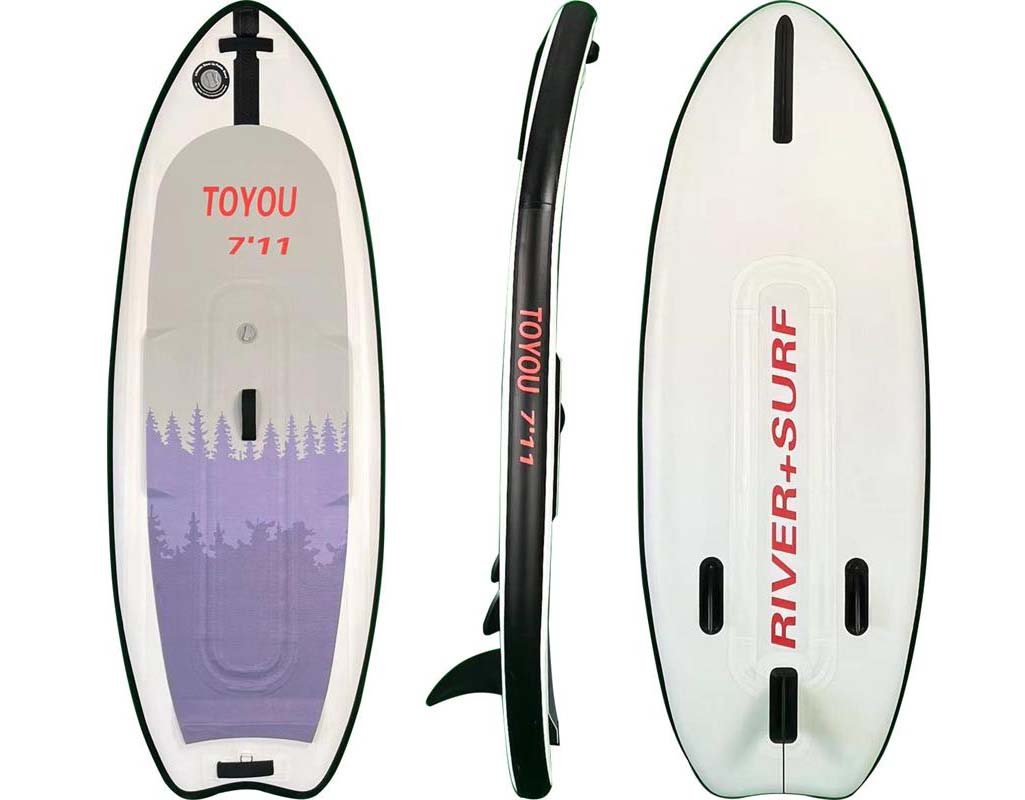Choosing a suitable inflatable stand-up paddleboard (SUP) depends on several factors, including your skill level, intended use, body weight, and the type of water you plan to paddle in. Here’s a guide to help you make an informed decision:
1. Skill Level:
- Beginner: Look for a wider and more stable board, typically 31″ to 34″ wide, which offers better balance.
- Intermediate/Advanced: You might prefer a narrower board (28″ to 32″ wide) for more speed and maneuverability.
2. Board Length:
- Short Boards (9’6” and below): Easier to maneuver, ideal for surfing and lighter paddlers.
- Medium Boards (10’ to 12’): Best for all-around use, including recreational paddling, yoga, and light surfing.
- Long Boards (12’6” and above): Great for touring and racing, providing more speed and tracking.
3. Board Thickness:
- 4” Thickness: Suitable for lighter paddlers (up to 150 lbs) or those looking for a closer-to-water feel.
- 6” Thickness: Offers more buoyancy and is better for heavier paddlers or those carrying gear.
4. Intended Use:
- All-Around SUP: Versatile for various activities like recreational paddling, yoga, and light surfing.
- Touring/Racing SUP: Designed for longer distances and faster speeds, with a more streamlined shape.
- Surf SUP: Shorter with more rocker, making it better suited for riding waves.
- Yoga/Fitness SUP: Wider and more stable, with a larger deck pad for comfortable exercise.
5. Weight Capacity:
- Ensure the board’s weight capacity can support your body weight plus any gear. Exceeding this capacity can affect the board’s performance and stability.
6. Construction & Durability:
- Look for boards made with military-grade PVC and drop-stitch construction, which are more durable and resistant to punctures.
7. Accessories:
- Consider what comes with the board, such as a paddle, pump, leash, and carry bag. Some boards also offer mounts for action cameras or bungee storage areas.
8. Budget:
- Prices can vary widely. Entry-level boards are more affordable, but higher-end models offer better materials and performance features.
9. Brand Reputation:
- Research the brand and read reviews to ensure the board is reliable and has good customer support.
10. Test Before Buying (if possible):
- If you have the opportunity, try out different boards to see which one feels most comfortable for you.
Summary:
Choosing the right inflatable SUP depends on balancing your needs with the board’s characteristics. For beginners, an all-around board with good stability is typically a safe choice, while more experienced paddlers might look for specific features like speed or maneuverability depending on their activity. Always consider the board’s durability, weight capacity, and included accessories to ensure it meets your requirements.


